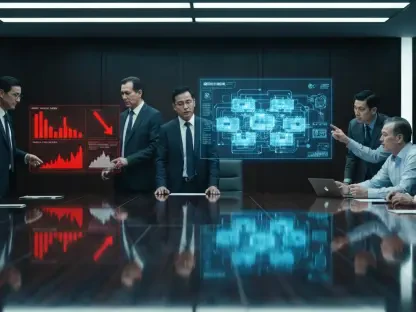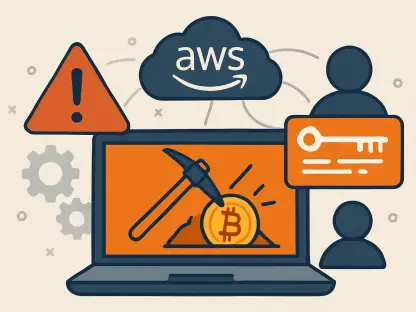Pallavi Duggal has established herself as a formidable figure in the software engineering landscape, traversing a remarkable journey from a fresh Member of Technical Staff (MTS) to a seasoned Software Engineer Manager. Her story is a compelling mix of technical expertise, innovative leadership, and an unyielding commitment to continuous learning. In exploring her professional narrative, we uncover valuable lessons and trends pertinent to modern software engineering.
Career Growth and Technical Proficiency
Early Stages: Member to Senior Member of Technical Staff
Pallavi’s entry into the tech world was marked by a relentless pursuit of excellence. Starting as an MTS, she rapidly ascended to Senior Member of Technical Staff (SMTS), demonstrating her keen ability to master complex technical concepts. Her early work set the foundation for her problem-solving ethos and commitment to high-quality code. During this period, she gained a reputation for her meticulous coding standards and ability to debug intricate issues, which quickly set her apart from her peers. Her capacity to break down and solve complex problems earned her the respect and recognition necessary for career advancement.As an SMTS, Pallavi honed her technical skills further by undertaking challenging projects that required innovative solutions. She demonstrated an exceptional ability to learn and adapt, often staying ahead of industry trends by engaging with the wider tech community through forums, webinars, and continuous professional development. Her experience during these years laid the groundwork for her future roles in leadership, where she would leverage this technical expertise to guide and mentor her teams, ensuring that they adhered to the highest standards of software excellence.
Rise to Leadership: Lead Member and Software Engineer Manager
The transition from Senior Member to Lead Member of Technical Staff (LMTS) presented new challenges and opportunities for Pallavi Duggal. She showcased exceptional skills in managing projects, mentoring junior developers, and spearheading critical technical initiatives. Pallavi’s role as an LMTS involved overseeing the end-to-end lifecycle of projects, which required a balanced mix of technical acumen and managerial prowess. Her ability to navigate the complexities of large-scale projects while ensuring timely delivery and high-quality outcomes was a testament to her leadership qualities.Mentorship played a crucial role in her ascent to Software Engineer Manager, where she now oversees multiple teams and drives technological innovation. Pallavi’s transition into management was characterized by her commitment to fostering a collaborative and inclusive team culture, encouraging innovation and continuous learning. Under her leadership, teams flourished, achieving notable successes in product development and performance optimization. Her focus on team-building and skills enhancement ensured that her team members were not only technically proficient but also well-prepared to tackle future challenges, reinforcing her reputation as an inspiring and effective leader.
Choosing the Right Tech Stack
Decision-Making Framework: Project Requirements and Team Proficiency
Pallavi’s methodology for selecting technology stacks involves a nuanced evaluation of project needs and team strengths. Recognizing that the right tools can accelerate development, she opts for stacks that align with both current and long-term goals. Technologies like Node.js within a microservices architecture are favored for their performance and scalability capabilities. Pallavi meticulously assesses the unique requirements of each project, considering factors such as the scope of functionality, integration compatibility, and the expertise of her development team. This strategic choice ensures that her teams can deliver efficient, high-quality solutions within projected timelines.Her decision-making framework also takes into account the technological landscape and future trends. Being attuned to evolving technology helps Pallavi make informed decisions that not only address immediate project needs but also anticipate future requirements. This foresight allows for the seamless integration of new technologies, fostering a development environment that is agile and forward-thinking. Collaborating closely with her team, Pallavi actively seeks input on technology preferences and proficiencies, creating a sense of ownership and accountability that drives collective success in tech stack implementation.
Long-Term Sustainability and Adaptation
Sustainability and future-proofing are vital considerations in Pallavi’s tech stack decisions. She emphasizes choosing technologies that allow for easy maintenance and adaptation, ensuring her projects remain robust and adaptable to evolving tech landscapes. Her approach includes thorough research and hands-on experimentation with new tools, fostering a culture of continual improvement. By staying abreast of emerging technologies and industry best practices, Pallavi ensures that her teams are equipped to handle both current tasks and future challenges.This proactive approach proves instrumental in the long-term success of her projects, allowing for scalability and extending the lifecycle of the software solutions she oversees. Pallavi’s emphasis on sustainability extends beyond technical considerations; it encompasses team dynamics, resource allocations, and long-term strategic goals. This holistic approach ensures that the chosen tech stack not only meets immediate project requirements but also aligns with the overarching vision of the organization. Her leadership in this domain exemplifies a commitment to building sustainable, high-impact software solutions that stand the test of time.
Database Performance Optimization
Initial Assessment and Strategic Interventions
Faced with the challenge of optimizing database performance, Pallavi initially focuses on identifying bottlenecks through comprehensive analysis. Techniques such as data partitioning and enhanced monitoring provide key insights. For instance, her implementation of advanced monitoring tools like Splunk and ETW has been pivotal in preempting performance issues. By deploying sophisticated monitoring systems, she can capture valuable metrics that help pinpoint the root causes of inefficiencies. This data-driven approach allows her to implement targeted interventions that effectively enhance database performance.Pallavi’s initial assessments often involve a collaborative effort, engaging cross-functional teams to understand various perspectives and leverage diverse expertise. The collaborative nature of her approach ensures that the strategies implemented are robust, well-integrated, and supported across all relevant functions. This inclusivity not only drives more effective solutions but also fosters a culture of shared responsibility and continuous improvement within the organization.
Innovative Solutions: Enhancing Efficiency
In tackling optimization issues, Pallavi employs innovative strategies that significantly boost system efficiency. One notable example is her work on the Contact Pause functionality, where she incorporated effective design principles and real-time data partitioning to enhance performance. Collaborative cross-functional efforts ensured these solutions were effectively integrated, underscoring her adeptness at driving systemic improvements. Pallavi’s solutions often involve a blend of traditional optimization techniques and cutting-edge innovations, resulting in substantial performance gains and improved user experiences.Her focus on innovation doesn’t end with technical implementations; it extends to process improvements and team dynamics. By encouraging a culture of experimentation and iterative development, Pallavi ensures that her teams are continuously exploring new ways to enhance system efficiency. Regular performance reviews and feedback loops are integral to her approach, enabling the team to identify areas for improvement and implement solutions swiftly. This dynamic and responsive methodology is foundational to her success in optimizing database performance and driving overall system efficiency.
Balancing User Needs and Technical Feasibility
Understanding User Requirements through Research
Pallavi anchors her approach to feature development in thorough user research, ensuring a deep understanding of needs and preferences. She engages in continuous dialogue with stakeholders and end-users to align the development process with user expectations, maintaining a user-centric perspective while managing technical constraints. Through surveys, interviews, and feedback sessions, Pallavi gathers actionable insights that inform her development strategy, ensuring that the solutions delivered are both usable and valuable to the end-users.This user-centric philosophy is complemented by a rigorous analysis of market trends and user behavior, which helps Pallavi anticipate future needs and opportunities for innovation. By integrating these insights into the development process, she ensures that the products and features developed not only meet current expectations but also position the organization ahead of the competition. Her commitment to understanding and addressing user needs sets a strong foundation for delivering high-impact, user-friendly solutions.
Aligning Expectations with Technical Capabilities
Technical feasibility is a core consideration in Pallavi’s strategy. By maintaining clear, ongoing communication with stakeholders, she ensures that development goals are realistic and achievable. Iterative testing phases and stakeholder feedback loops are integral to her process, balancing user satisfaction with technical integrity. This alignment is crucial to mitigating risks and ensuring that the final product meets both user needs and technical standards.Pallavi’s ability to navigate the delicate balance between user expectations and technical capabilities is a testament to her strategic thinking and collaborative leadership style. By fostering an environment where open communication and feedback are encouraged, she ensures that all stakeholders are engaged and informed throughout the development process. This collaborative approach not only enhances the quality of the final product but also builds trust and cohesion among the teams and stakeholders involved. Her methodology demonstrates that successful software development is as much about managing relationships and expectations as it is about technical execution.
Handling Scalability Challenges
Engineering Scalable Solutions
Scalability is a recurring theme in Pallavi’s projects, exemplified by her work on Journey Builder within Marketing Cloud. By introducing scalable engines with queueing and batching mechanisms, she significantly increased the system’s throughput. These technical innovations enabled the platform to handle higher transaction volumes efficiently. Pallavi’s approach to scalability involves a thorough understanding of system architecture and a strategic application of scalable technologies that ensure robust performance under varying loads.Her work on Journey Builder highlights her capacity to design and implement systems that can gracefully scale to meet growing demands. This project required intricate planning and execution, leveraging her deep technical knowledge and collaborative leadership style. Pallavi’s ability to anticipate potential scalability issues and proactively address them through innovative solutions exemplifies her forward-thinking approach and her commitment to delivering high-performance systems.
Proactive Monitoring and Optimization
Pallavi relies on advanced monitoring tools to glean insights into system performance and make proactive adjustments. Technologies such as adaptive throttling dynamically manage workloads, ensuring system reliability and enhancing scalability. This strategic combination of engineering innovation and proactive optimization highlights her ability to address scalability challenges effectively. By deploying these tools, Pallavi ensures that her systems operate efficiently, even under peak loads, minimizing downtime and maximizing user satisfaction.Her emphasis on proactive monitoring extends beyond the deployment phase; it is an ongoing process of continuous improvement. Pallavi’s teams regularly review performance metrics and implement optimization strategies to address any emerging issues. This iterative approach to monitoring and optimization ensures that her systems remain robust and reliable over time, capable of handling increasing workloads without compromising on performance. Her leadership in this domain underscores her commitment to delivering scalable and resilient software solutions that meet and exceed user expectations.
Ensuring System Reliability
Advanced Monitoring and Metrics Frameworks
Reliability is paramount in Pallavi’s projects. She employs sophisticated monitoring frameworks, using tools like Splunk and Grafana to detect anomalies early and ensure high availability. These tools allow her teams to maintain a proactive stance, addressing potential issues before they impact users. By leveraging these advanced monitoring systems, Pallavi ensures that her projects consistently deliver reliable performance, maintaining high standards of service availability and user satisfaction.Pallavi’s approach to system reliability involves a comprehensive strategy that encompasses both technical and operational aspects. She emphasizes the importance of setting up robust monitoring frameworks that provide real-time insights into system health and performance. Regular audits and reviews of these frameworks ensure that they remain effective and up-to-date with the latest industry practices. Her dedication to maintaining high system reliability is a cornerstone of her success, reflecting her deep understanding of the critical role that reliability plays in user satisfaction and business success.
Customer Trust and Service Consistency
Maintaining reliable services is foundational for customer trust. Pallavi’s commitment to consistency has involved implementing adaptive throttling mechanisms, reducing downtime, and enhancing user experiences. Through these strategies, she has successfully minimized customer attrition and bolstered system reliability. By ensuring that her systems deliver consistent, high-quality performance, Pallavi reinforces the trust and confidence that users place in her products.Her focus on service consistency extends to all aspects of her projects, from initial development through to ongoing maintenance and support. Pallavi understands that maintaining high levels of reliability is essential for building and retaining customer trust. This commitment to service consistency is reflected in her meticulous planning, proactive monitoring, and swift response to any issues that arise. By prioritizing reliability and user satisfaction, Pallavi ensures that her projects deliver long-term value, fostering strong, lasting relationships with customers.
Continuous Learning and Staying Current
Professional Development and Industry Engagement
For Pallavi, continuous learning is not optional but essential. She actively participates in conferences, webinars, and tech forums such as GitHub to stay updated with industry trends. This knowledge-sharing culture ensures her teams are always at the forefront of technological advancements. Pallavi’s dedication to professional development not only enhances her own skills but also creates a culture of continuous learning within her teams, driving innovation and excellence in all aspects of her work.Her engagement with the broader tech community allows her to stay informed about the latest developments and best practices, which she then integrates into her projects. By fostering an environment where learning and growth are prioritized, Pallavi ensures that her teams are well-equipped to tackle the ever-evolving challenges of the tech landscape. This commitment to staying current and continuously improving is a hallmark of her leadership style, reflecting her deep passion for technology and innovation.
Experimentation with New Technologies
Pallavi Duggal has carved out a significant niche for herself in the field of software engineering, rising from the role of a fresh Member of Technical Staff (MTS) to becoming a seasoned Software Engineer Manager. Her journey stands as a testament to her technical prowess, visionary leadership, and relentless commitment to ongoing education. She has been instrumental in navigating technological complexities and leading teams to success.Her story is not just about professional growth but also about the importance of adaptability and lifelong learning in a fast-evolving industry. Duggal has continually embraced new challenges, championing innovative solutions and setting higher standards for engineering excellence. Her approach demonstrates how a blend of technical skills and strategic leadership can yield a remarkable career trajectory and team success.By examining her professional path, we gain insights into the essential qualities required for thriving in current software engineering roles. Her experiences offer valuable lessons and reflect broader trends in the industry, particularly the need for continuous self-improvement, innovative thinking, and resilient leadership. Thus, Pallavi Duggal’s career encapsulates the dynamic and demanding nature of modern software engineering.









